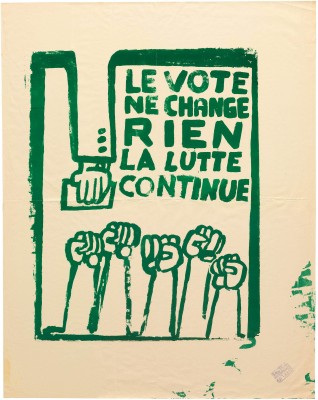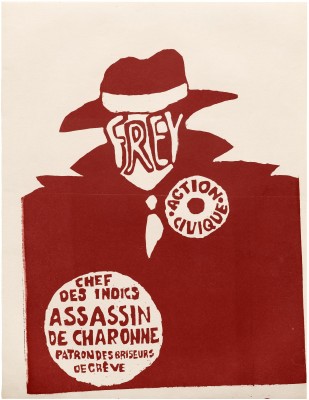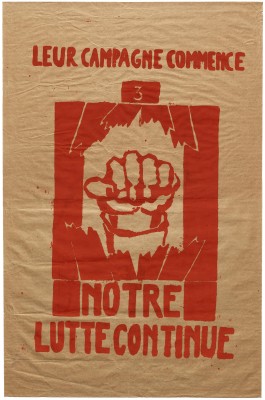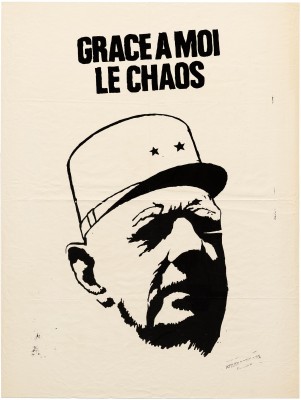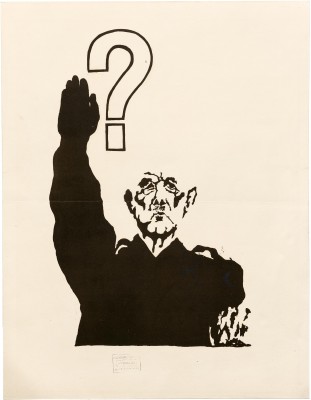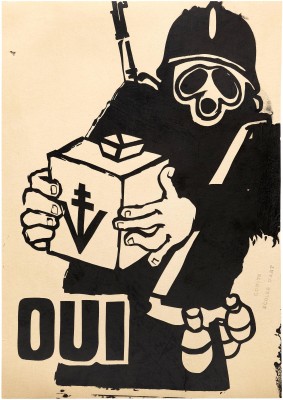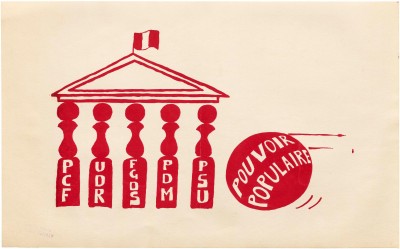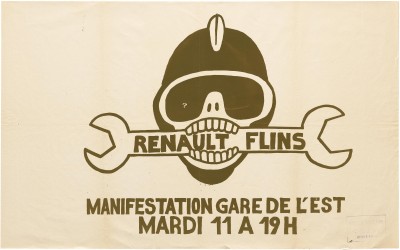News
This Just In: Posters of May ’68
We commemorate the 50th anniversary of the Paris uprising with a collection of posters by the Atelier Populaire (Popular Workshop).
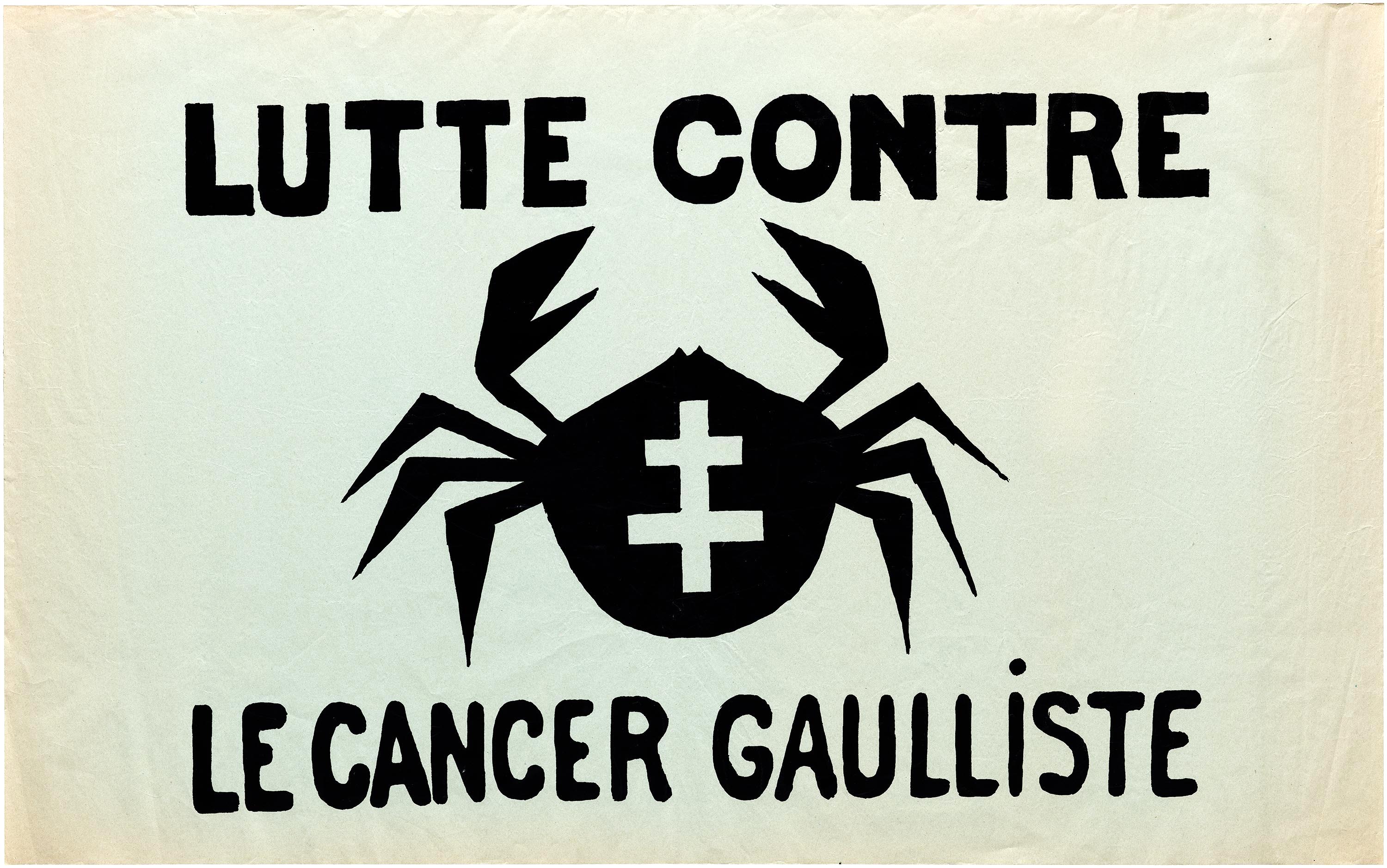
The posting took place under the cover of night. Parisiens would wake up the following morning and see the issues at hand. — Philippe Vermès, co-founder of the Atelier Populaire
In May 1968 nearly a million students and workers nearly shut down France and toppled its government. They had no centralized organization, no single charismatic leader, no trade union nor political party. Their common ideology was a reaction against a Charles de Gaulle regime they saw as increasingly totalitarian, and they took to the streets. They acted through mass demonstrations and labor strikes, and without a core organizing committee their main method of communication was the poster.
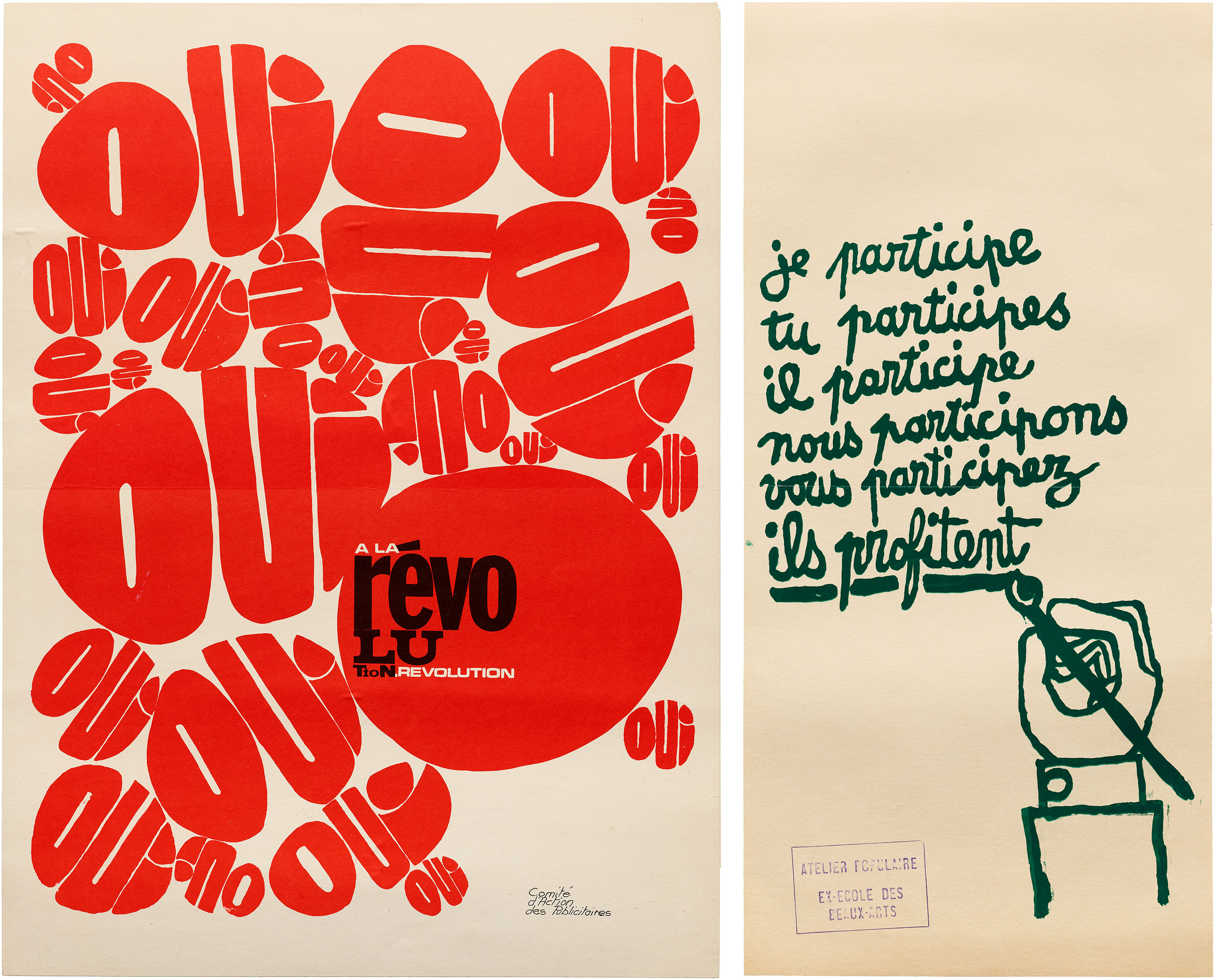
Je Participe, Tu Participes, Il Participe, Nous Participons, Vous Participez, Ils Profitent (I Participate, You Participate, He/She Participates, We Participate, You [All] Participate, They Profit)
The production of posters was initiated on May 14 by a group of students from the Ecole National Supérieure des Beaux Arts. Seeking a way to get involved with the protests already underway, they occupied the lithography studio at the venerable art school. Philippe Vermès, co-founder of the group, talks about those early days in his essay for the book Beauty Is in the Street:
The idea was to keep the effort collective to avoid bourgeois values. We no longer called ourselves Ecole des Beaux-Arts; we signed our posters Atelier Populaire des Beaux Arts or simply Atelier Populaire and stuck one up on the atelier door that read “Atelier Populaire: oui, Atelier Bourgeois: non”.
The Atelier later switched to silkscreening, which was more affordable and more efficient, allowing them to produce up to 2,000 posters at a time. Not only was screen printing faster, Vermès recalls that it was more portable:
We feared a police bust at the Atelier Populaire, and they did finally come on June 27 and shut down the Atelier. There was no resistance; we took our paper, our paint, and our press with us and walked out. The police had expected to seize a big printing press; they didn’t realize that we carried out our tools for poster making with us!
Soon the printmakers occupied factories that were shut down by striking workers, transforming centers of corporate manufacturing into publishers of dissent. Typically printed on cheap paper with a single color, raw lettering and imagery voiced support for labor strikes, they delivered simple, strong messages against colonialism, consumerism, police brutality, and attacks on the free press.
Charonne — Metro station in the 11th Arrondissement in Paris. In 1962, it was the site of a police massacre of 9 people, mostly young Communists, who were protesting in support of Algerian independence.
FGDS (Fédération de la Gauche Démocrate et Socialiste) — Federation of the Democratic and Socialist Left. A coalition of Mitterrand’s Convention of Republication Institutions (CIR), the French Section of the Workers’ International, and the center-left Radical Party.
Flins — 40 km outside Paris, the location of a major Renault factory.
Frey, Roger — French Minister of the Interior from 1961 to 1967. His tenure saw the brutal repression of Algerian separatists and their supporters, including the 1962 Charonne massacre, and made extensive use of informers and secret police organizations like the Civic Action Committees.
ORTF (Office de Radiodiffusion et Télévision Française) — French Radio and Television Broadcasting Office. France’s public broadcasting agency.
PCF (Parti Communiste Française) — French Communist Party.
PDM ((Centre) Progrès et Démocratie Moderne) — Center for Progress and Modern Democracy. Right-wing Catholic party.
PSU (Parti Socialiste Unifié) — Unified Socialist Party.
UDR (Union pour la Défense de la République) — Union for the Defense of the Republic. The name adopted by de Gaulle’s party during the May events.
The Atelier Populaire posters were rarely saved, and large collections are not often shown. Letterform Archive feels fortunate to have recently acquired several dozen posters, some of which are shown here. We recognize the complicated responsibility of holding this work as part of a historical collection. Members of the Atelier have raised questions about their prints being recognized as artifacts or works of art, preferring that they be seen only in their intended settings, “in the streets or on the walls of factories”. From the frontispiece of their 1968 book Posters and the circumstances of their making:
The posters … are weapons in the service of the struggle and are inseparable from it. To use them for decorative purposes, to display them in bourgeois places of culture or to consider them as objects of aesthetic interest is to impair both their function and their effect.
Acknowledging this conundrum, we present these images in the spirit of dialog, to raise awareness of the Atelier Populaire – of both its art and its intentions – and reconsider how such work should be recognized and preserved. The May ’68 movement in Paris is too often overlooked in the United States, where our retrospective gaze is often trained on our own counterculture moments of the late ’60s, but Letterform Archive intends our collection and community to be international.
That spirit of appreciation and dialog continues next week in our Advocacy & Activism Salon in which Kate Long will show and discuss posters, periodicals, and handbills by designers with a cause. Join us!
— Stephen Coles, Associate Curator & Editorial Director
We highly recommend Beauty Is in the Street: A Visual Record of the May 68 Uprising, edited by Johan Kugelberg and Philippe Vermés, which provides an excellent history of the Atelier’s work and its historical context. The glossary shown here is excerpted from the book.

